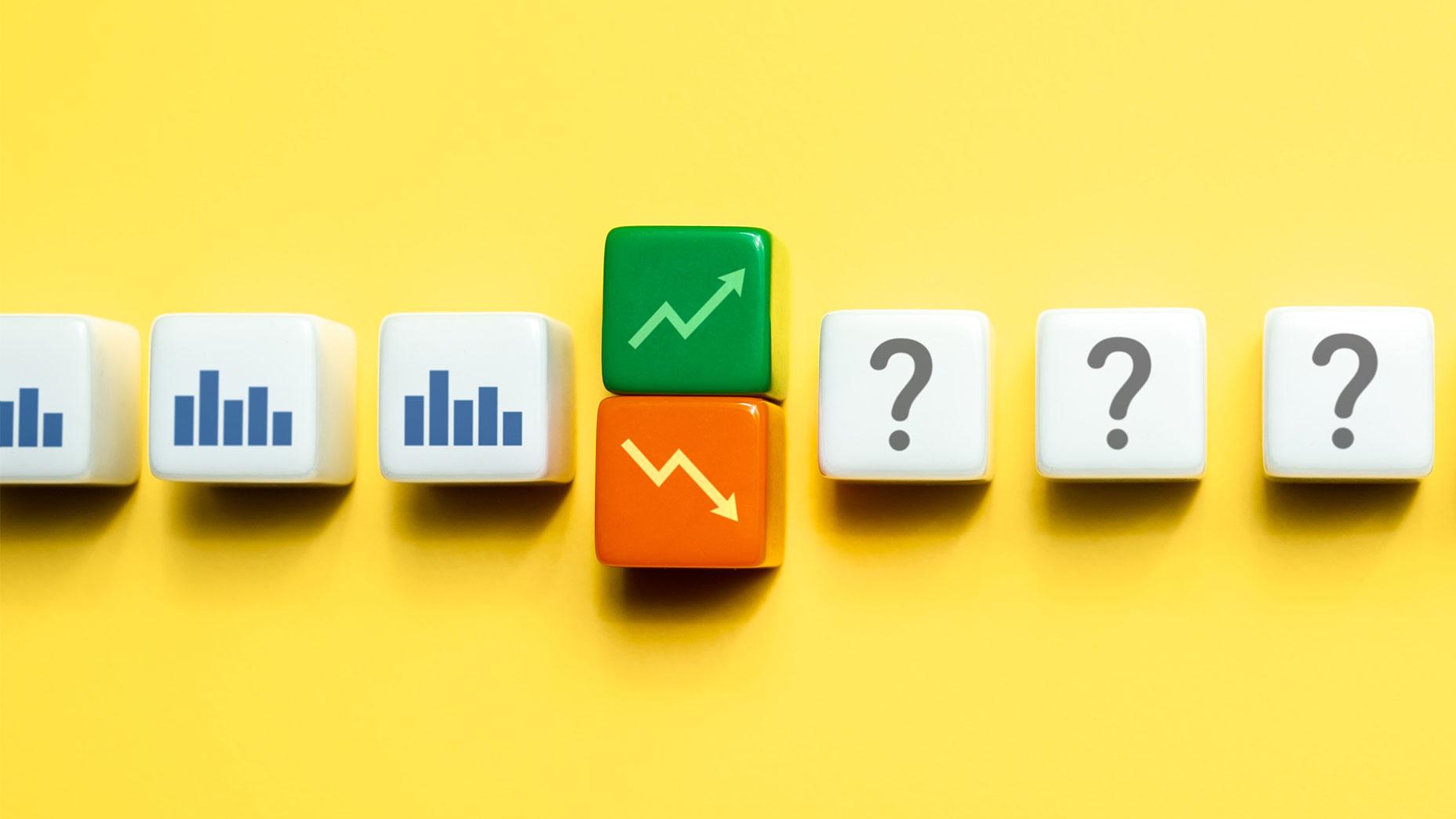Tech Analysis for Investing in Stocks

9 minutes for reading
When it comes to buying stocks, many run up to tech analysis and starts studying charts before performing a trade. In this review, we will discuss several methods of tech analysis and will try to answer the question whether tech analysis can help in choosing stocks for investments.
What is tech analysis of stocks
Tech analysis of stocks implies studying history of price behaviour for forecasting its future movements so that they will generate a profit. The main task of the trader is to detect the prevailing market trend and trade it. Unfortunately, this type of analysis does not care for financial performance of the company or fundamental reasons for the growth of stock prices.
At the same type, chart analysis helps to understand the behaviour of market players as there is an idea that people will always act the same way in order to make a profit, out of greed or fear. Hence, certain laws of price behaviour, also called patterns, have also been there on the charts, as long as human psychology remains the same. A person understanding price patterns can forecast the behaviour of the price encountering the pattern on the chart. This will help to perform a trade with minimal risks by just following the rues of graphic patterns.
The basics of modern tech analysis were formulated by Charles Dow; he also developed the principles of analysing the Dow Jones market index. Later his work was supplemented and adapted for the new types of financial markets. All of the modern tech analysis is based on the three main axioms:
Price accounts for everything
Price is a result of fight between buyers and sellers who are prone to various factors of influence and understands the situation differently. Hence, traders who use tech analysis of stocks are sure that they do not need any additional factors to analyse the price; they focus solely on price charts as long as charts take account of all events that can influence the price.
Prices are prone to trends
Price is not moving chaotically, there are trends in the market inside which stock price fluctuates. A trend in tech analysis is the direction of price movements; the trader can assess such a trend by looking at the highs and lows on the chart. If the price goes upwards, each next high and low will be higher than the previous one, which indicates the power of buyers and the fact that sellers do not have enough strength to bring down the chart. Hence, for some more time the price will continue going up, until next highs and lows will become lower than the previous ones. This will be a signal for a trend reversal.
History repeats itself
Past prices and future prices have always been and will be the result of fight between sellers and buyers, who are simple people whose psychology never changes. Hence, certain events that happened in the past will certainly be repeated in the future. Usually tech analysts bring up examples of price patterns that regularly appear on charts and allow for forecasting future price behaviour. We can say that some patterns appeared more than 100 years ago and were used by the market then already; we can find these patterns on the chart now and are very likely to find them in the future.
Methods of tech analysis
There are various methods of analysing the chart but the goal of assessment is always one and the same – namely, to forecast future price behaviour. And while in the past traders used to draw charts by hand, looked for their inner laws, and even drew indicators manually, today all this can be done on the computer in a split second. Conditionally, methods can be divided into the following parts.
Graphic analysis
The idea of graphic analysis is basically analysing the chart with simple instruments such as trendlines, support and resistance levels, and price patterns. However, tech analysis is not always easy to use, it requires experience and knowledge, and traders call it art, not science.
For example, the trader draws a trendline through the highs and waits for a bounce off it or a breakaway potentially indicating a trend reversal. So, while the price is above the trendline, the trader buys, and as soon as the price drops below the line – they sell the stocks.
One of the most popular graphic patterns is Head and Shoulders. It is a series of three price peaks, the second one always being higher or lower than the other two depending on the trend in which the pattern forms. The middle peak is called “head” and the two others peaks are called “shoulders”. As a rule, traders buy stocks at the second shoulder with minimum risks, because in this case the profit will equal the height of the pattern.
Algorithmic analysis
This type of analysis is used alongside indicator analysis. An indicator is a result of mathematically processing the price. On of the most popular instrument today is the Moving Average: this is a line drawn through Close prices that smoothes out market fluctuations. Most often, traders use this instrument for assessing the trend on price charts: if the price is above the line, the trend is ascending, so it is time to buy; and if the price is below the MA, the trend is descending, so it is time to sell. Sometimes several MAs with different periods are used at once; in this case, crossing of the lines will give a signal to buy or sell. Also, traders may use several indicators to receive two or three signals simultaneously, which improves the quality of tech analysis.
Candlesticks analysis
In this case, price fluctuations look like rectangles with shadows above and below. These rectangles are called Japanese candlesticks. There is a theory that this method appeared in the Middle Ages already for trading rice. The idea of the method is looking for candlesticks combinations that can hint on the future price behaviour. For example, a candlestick with a long upper shadow and a small body indicates pressure on the sellers’ side, and the price is likely to fall after such a candlestick appears. There are plenty of candlesticks combinations; the trader needs to study them and look for them on charts to forecast future price behaviour.
Price action
This type of tech analysis unites graphic and candlesticks analyses; such work does not require use of a PC. The trader combines support and resistance levels with candlesticks patterns and tries to understand whether the price will break through these levels or bounces off them. Here, a beginner needs to study several types of analysis before beginning full-scale work.
Criticism of tech analysis for stocks
There is a view that price behaviour cannot be forecast on charts because prices change chaotically, making use of price history useless. Clearly, no level or pattern can guarantee for 100% that the price will behave this or that way. It might happen that traders just see similar patterns on the chart and open similar trades simultaneously, thus moving the price in the required direction, which creates the impression that the pattern is working well. There is also an example of an ape that threw darts to lists of stocks and managed to create a portfolio no worse than financial gurus. Long-term investors do not care for which trend is now and whether there is reversal pattern on the chart: they are only interested in the fair cost of the stock. Hence, minor price fluctuations provoke no emotions in them, and tech analysis is not necessary for long-term traders.
Main books for studying tech analysis
The number one manual for traders is John Murphy’s “Technical Analysis of Futures Markets”. This book has everything in it: descriptions of trends and chart types, ways of using trendlines and horizontal levels, price patterns, indicators, etc. However, there are other books on tech analysis with a deeper analysis of work methods.
A detailed description of graphic patterns and trading options can be found in Suri Duddella’s “Trade Chart Patterns Like the Pros”. The author is famous for the Dragon pattern, which is a type of the Double Top/Bottom pattern with Fibonacci levels added to it. The book describes the pattern and trading it in detail.
Trading principles for Japanese candlesticks are well described in Steve Nison’s books. He is rightfully called an expert in candlesticks analysis, and his books “Japanese Candlesticks” and “Beyond Candlesticks” describe a lot of candlesticks combinations with examples.
Modern ways of trading by tech analysis can be found in Bryce Gilmore’s book “Price Action Manual”. Apart from simple analysis, it offers ways of using the time of signals forming and adds new details to well-known patterns.
Closing thoughts
There are contrasting views on tech analysis in trading stocks. Some say that it is used only by traders who need to find a good entry point on the chart to make a profit on price fluctuations and who are not interested in the company’s activities and success. Some will also say that tech analysis does not simply work for stocks.
Martin Pring in his book “Technical Analysis Explained” gave an example: investing 44 USD in 1987, he used the Dow Jones index and made a profit of 51,000 USD instead of 2,500 USD without tech analysis. Perhaps studying the basics of tech analysis will be useful to avoid buying stocks on peaks and find good opportunities on corrections.
It is always should be realised, however, that no matter how good your method of analysis is, it is just 20% of success, while the remaining 80% is psychology and discipline.


















 are complex instruments and come with a high
are complex instruments and come with a high  of losing
of losing  rapidly due to
rapidly due to  . 69,88% of retail investor accounts lose
. 69,88% of retail investor accounts lose  when trading
when trading  with this provider. You should consider whether you understand how CFDs work and whether you can afford to take the high
with this provider. You should consider whether you understand how CFDs work and whether you can afford to take the high